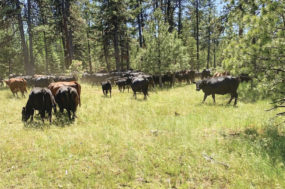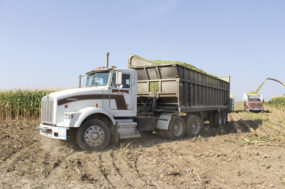And while it’s worthwhile to reflect personally and professionally, it’s also valuable to take a few minutes and reflect on the big events that happened in regard to the U.S. beef industry in 2016.
-
Cattle futures and cash price disconnect – Volatility in the cattle futures market reached a boiling point in 2016. While several explanations for the price swings have been offered – including limited cash market information and high-frequency trading – no easy solution seems to exist.
The December 2017 live cattle future contract listing was delayed this summer while the cattle industry and CME Group worked to address concerns. While steps have been taken, the conversation will likely continue into 2017.
-
Prices continue lower – The latest USDA estimate is for lower cash receipts across the livestock sectors. Animal and animal product cash receipts in total were forecasted nearly 10 percent lower in 2016.
More specifically, milk receipts are expected to be 3.6 percent lower, while hogs are pegged at 6.5 percent lower. Conditions are a bit more difficult in cattle and calves, as price declines are anticipated to push cash receipts 11 percent lower.
-
Cattle herd expansion continues – In January, the USDA reported the U.S. cattle herd expansion is still underway. Beef cattle were up 4 percent from January 2015, while the calf crop was estimated to be 2 percent higher.
Looking ahead, many wonder how long the expansion trend will hold, as lower price and diminished profits will begin to curb producers’ enthusiasm to continue with expansion plans.
-
Meat consumption higher – The latest consumption estimates show an upward trend in beef consumption for 2016 and 2017. This would reverse the decade-long, downward trend per-capita beef consumption.
Furthermore, total red meat and poultry consumption is also expected to be higher in the U.S. Forecasted at nearly 215 pounds per capita in 2016, total red meat and poultry consumption will be at the highest levels since 2008, when consumption fell during the Great Recession.
-
China and U.S. beef – With a growing appetite for beef, China announced it was removing a ban on U.S. beef in September. This ban went into place in 2003 after a case of mad cow disease was found in the U.S.
There are a lot of details to be ironed out before cases of beef get loaded onto China-bound container ships, but this announcement is a first and critical step in the U.S. and China resumed beef trade.
-
U.S. and Brazilian beef – In other global trade news, the U.S. announced in August it was set to resume receiving fresh (chilled and frozen) beef import from Brazil. In October, the first shipment of frozen Brazilian beef arrived in Philadelphia.
When thinking about the market implications of Brazilian beef imports coming to the U.S., it’s important to note that, as with U.S. beef exports to China, there are a lot of moving parts. A significant hurdle for Brazil is limited trade status with the U.S. and fresh beef being subject to quota limits.
-
Impressive pasture conditions – Across the Midwest and Great Plains, favorable growing conditions led to strong pasture conditions during the summer and fall. While the U.S. Drought Monitor reported dry conditions in the West, Southeast and Northeast, the middle of country enjoyed mostly favorable pasture and hay production in 2016.
- More pork than expected – Indirectly impacting beef producers, the U.S. found itself with more hogs than expected in 2016 after the latest USDA inventory report. Modest increases in the breeding herd, combined with large jumps in litter size, left pork producers dealing with prices below breakeven. Abundant pork supplies make for a competitive meat counter at the grocery store.
While 2016 was a tough year, there were a lot of positive notes. It’s important to look back on 2016 as plans for 2017 get underway. What was memorable for you and your operation in 2016? ![]()
David Widmar is an agricultural economist specializing in agricultural trends and producer decision-making. He is the co-founder of Agricultural Economic Insights LLC and a researcher in the Center for Commercial Agriculture at Purdue University. Follow David on twitter.

-
David A. Widmar
- Agricultural Economic Insights
- Email David A. Widmar








